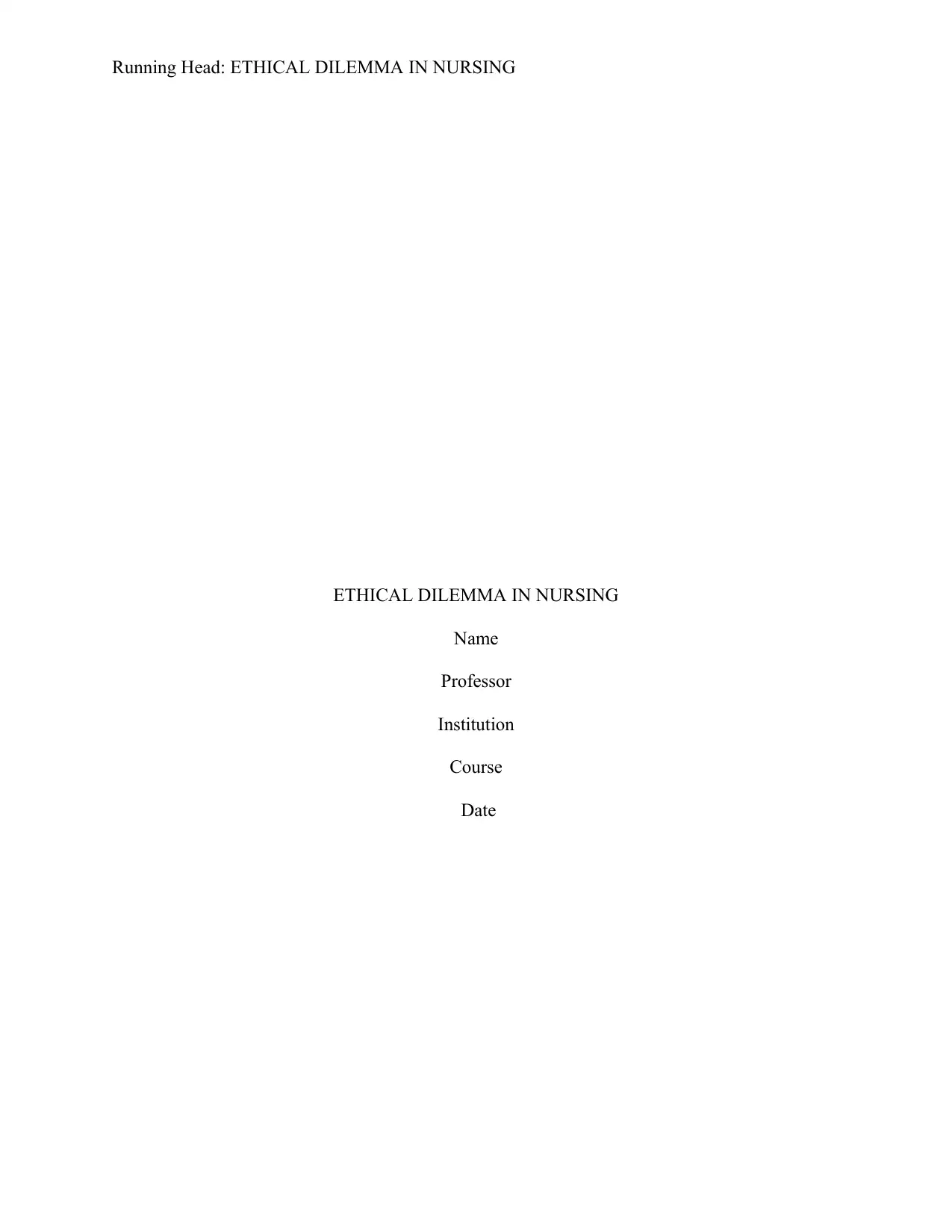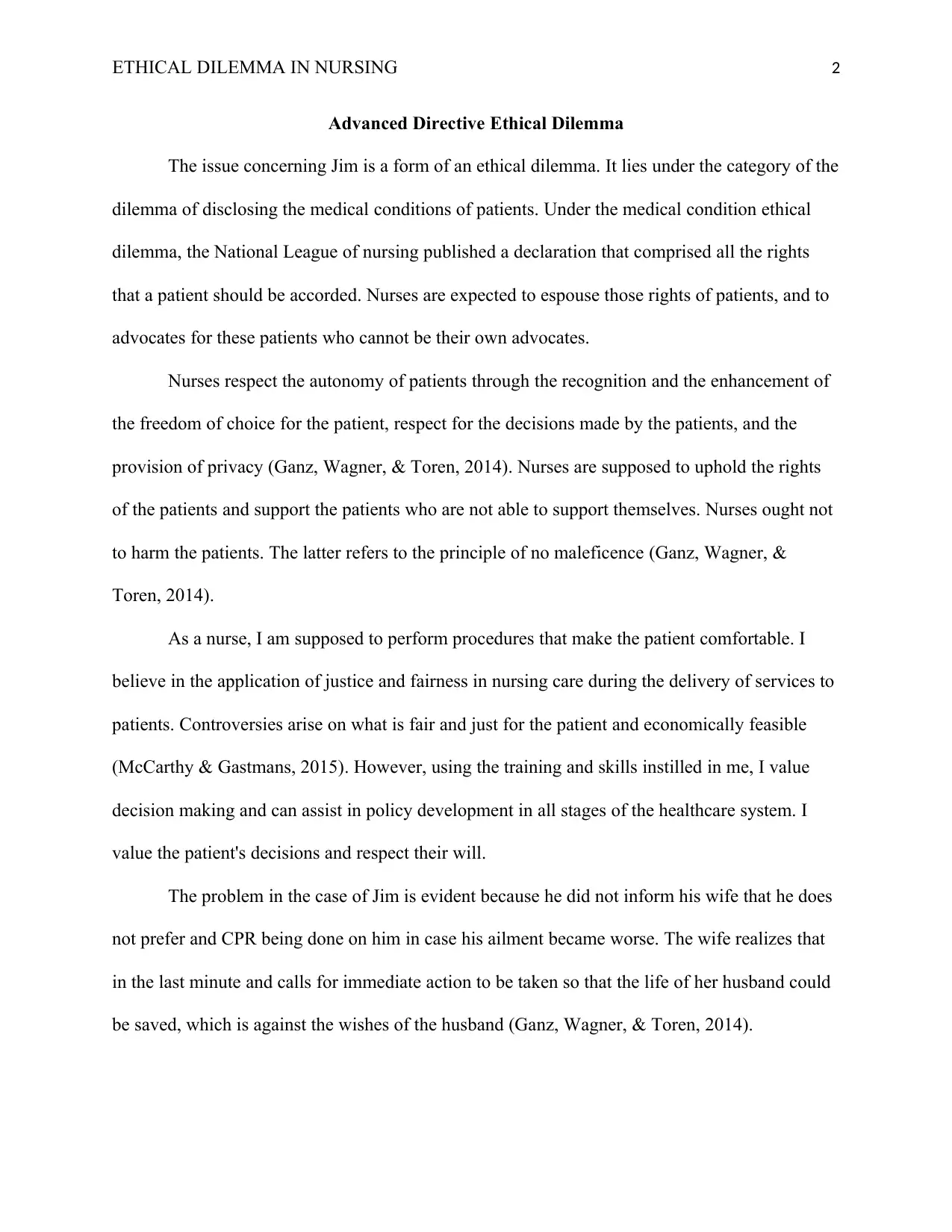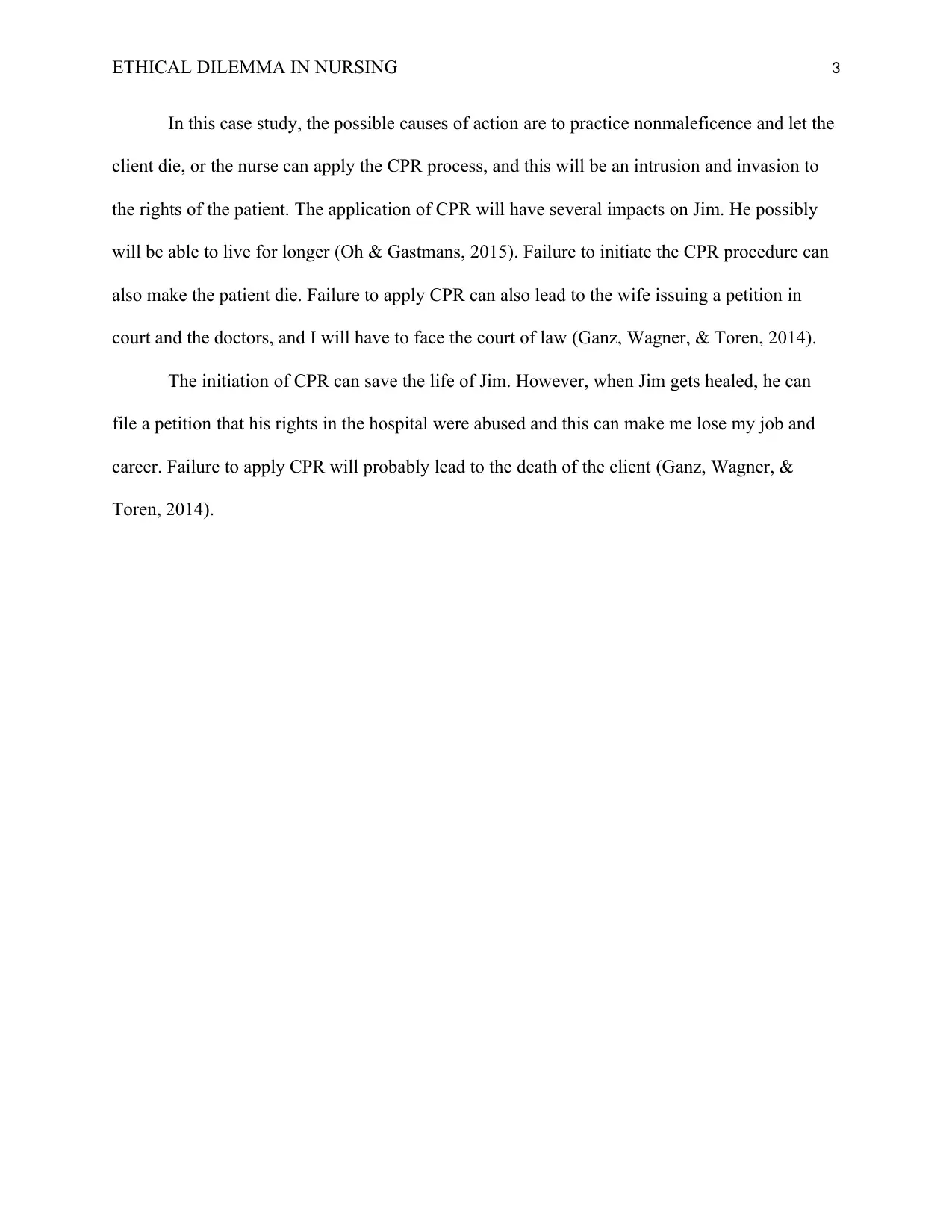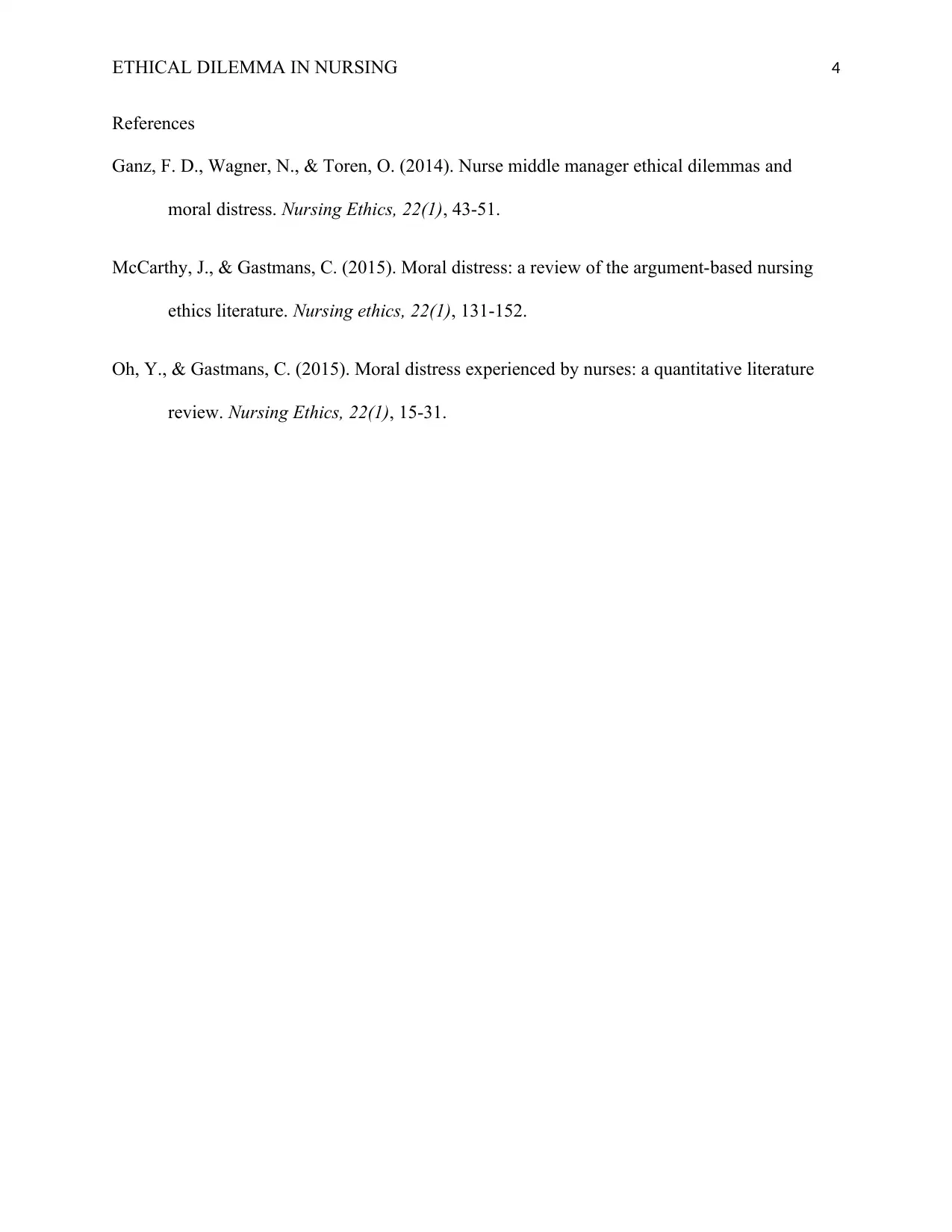Advanced Directive: Ethical Dilemma Case Study Analysis in Nursing
VerifiedAdded on 2022/10/02
|4
|674
|383
Case Study
AI Summary
This assignment presents a case study involving an ethical dilemma in nursing, specifically concerning a patient named Jim who has an advanced directive. The dilemma arises when Jim's wife requests CPR, which contradicts his previously stated wishes. The assignment explores the ethical considerations, including patient autonomy, non-maleficence, and the nurse's role in upholding patient rights. The analysis considers the potential consequences of both applying and withholding CPR, weighing the legal and professional implications. It references key principles from the National League of Nursing and relevant literature on moral distress and ethical decision-making in healthcare. The solution highlights the complexities of balancing patient wishes with the potential for saving a life, and the importance of respecting patient autonomy and privacy. The assignment emphasizes the need for nurses to advocate for their patients and navigate difficult ethical situations.
1 out of 4











![[object Object]](/_next/static/media/star-bottom.7253800d.svg)